Long Weekend in Évora
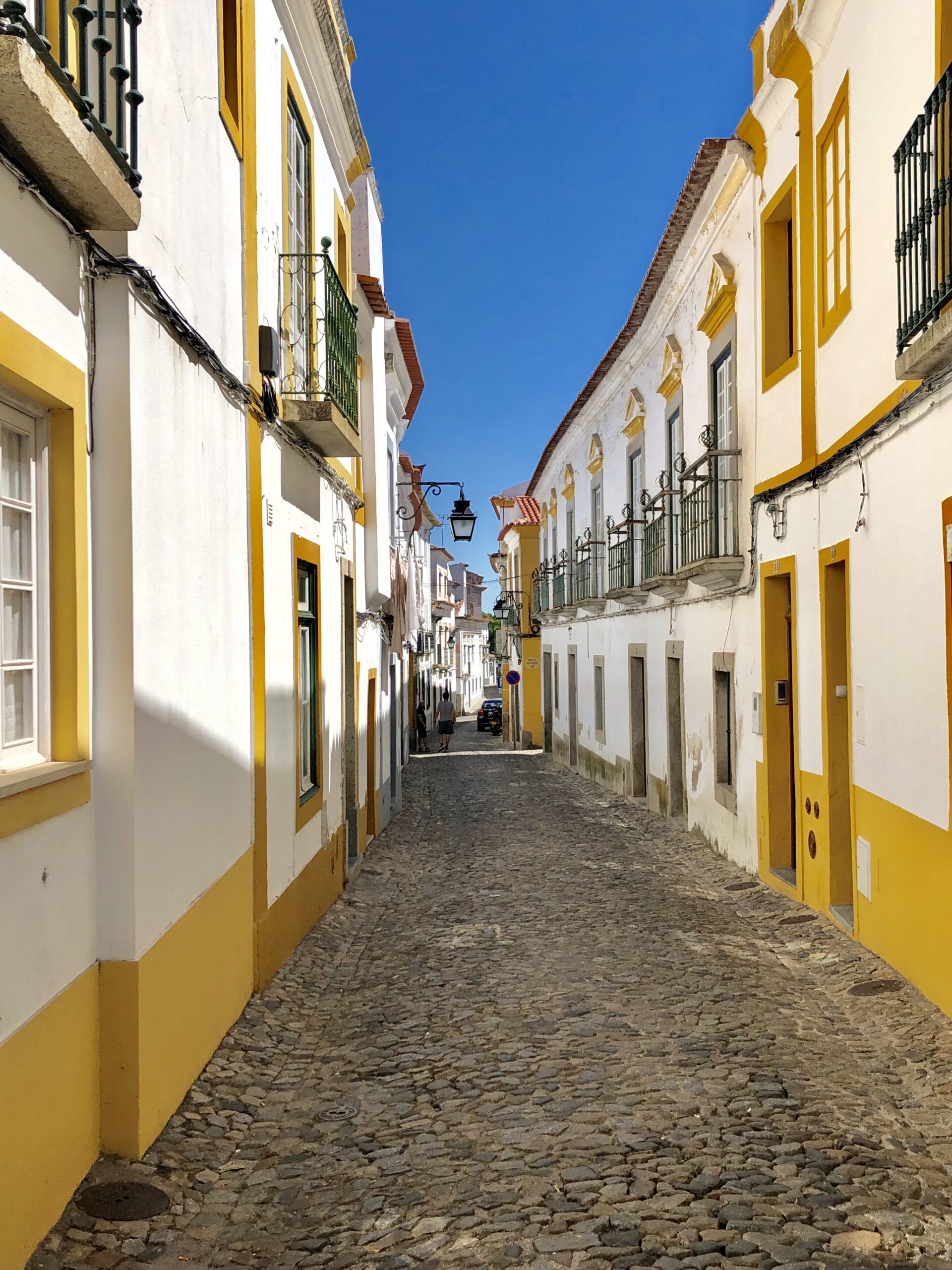
Embracing local travel in these COVID times, we had the delight of visiting the historic city of Évora! If you enjoy exploring small cities chock-full of history and charm this is the place for you. Also, Alentejo is a region that should absolutely be appreciated if you wish to experience Portugal in full. The rolling farmlands, vineyards and sun-baked olive groves surrounding Évora are stunning and remind me of the Tuscan hillside. In fact the city itself is reminiscent of Tuscany’s many medieval villages! Although many guide books and travel forums recommend visiting only as a day trip two nights and three days in my opinion is the sweet spot to really enjoy this place.
Why Évora?
Despite its small size, Évora is historically one of Portugal’s important cities and is designated a UNESCO World Heritage site. In fact, the city dates back to more than five millennia and was conquered by the Romans in 57 BC. Even today you can see the old, Roman city walls and baths in tact as well as many artifacts. For the Roman conquerors Évora was considered one of its most flourishing cities in the Iberian peninsula and was routinely referred to in texts and on coins.
Following the era of the invasion of the Visigoths the city was conquered by the Moors in 715. The meandering streets and pathways of Évora are heavily influenced by this period and reminds me of some parts of Lisbon for that reason. In the Museum of Évora, there are several artifacts with Arabic inscriptions displayed and some beautiful prints depicting Evora in the 1500s (below). In the Middle Ages, the city was then reconquered by the Portuguese King Alfonso I when the city continued to flourish further – the first and second royal dynasties made their capital here.
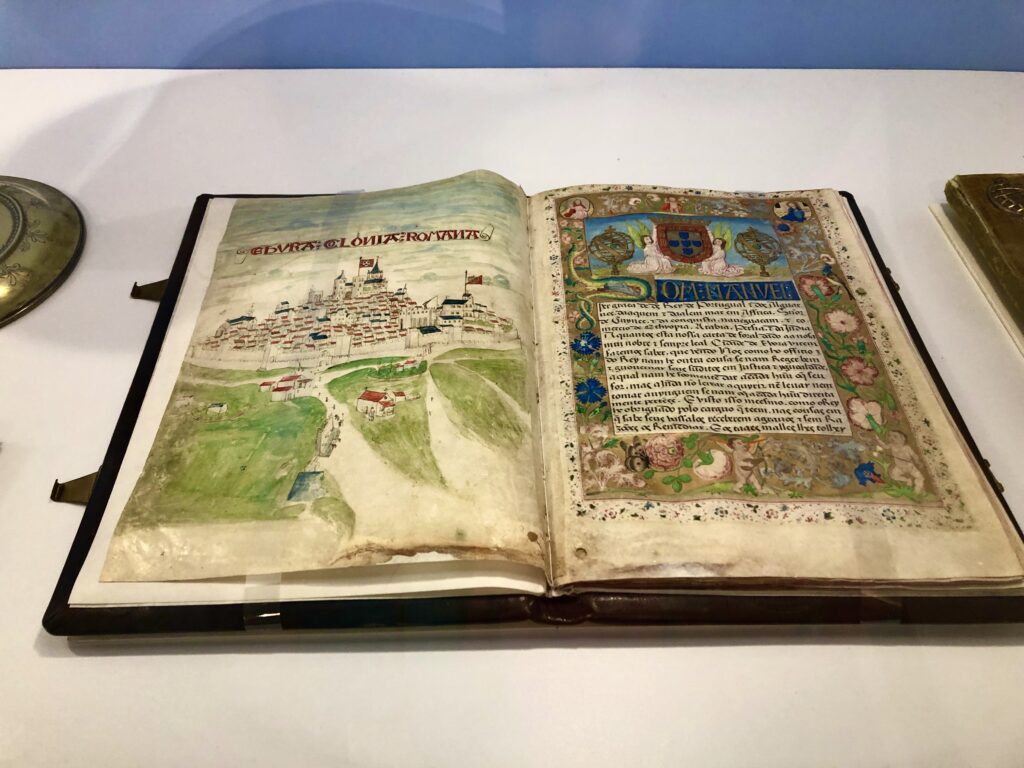
What struck me immediately as we walked into the city were the iconic yellow and white walls. Just this color combination alone makes Évora’s winding streets charming. The city and region also has a reputation for being hot with strong sunlight. The contrast of white walls against the deep blue sky is absolutely beautiful. There is an unmistakable mediterranean vibe to this place due to a slower pace of life. The surrounding, dry fields give off a simple, rustic feel to the city and the Alentejo region itself. Given the small size of Évora you could easily walk around in a day. However, there are many sights to see due to its rich history and you will want to meander through the quieter parts of town.
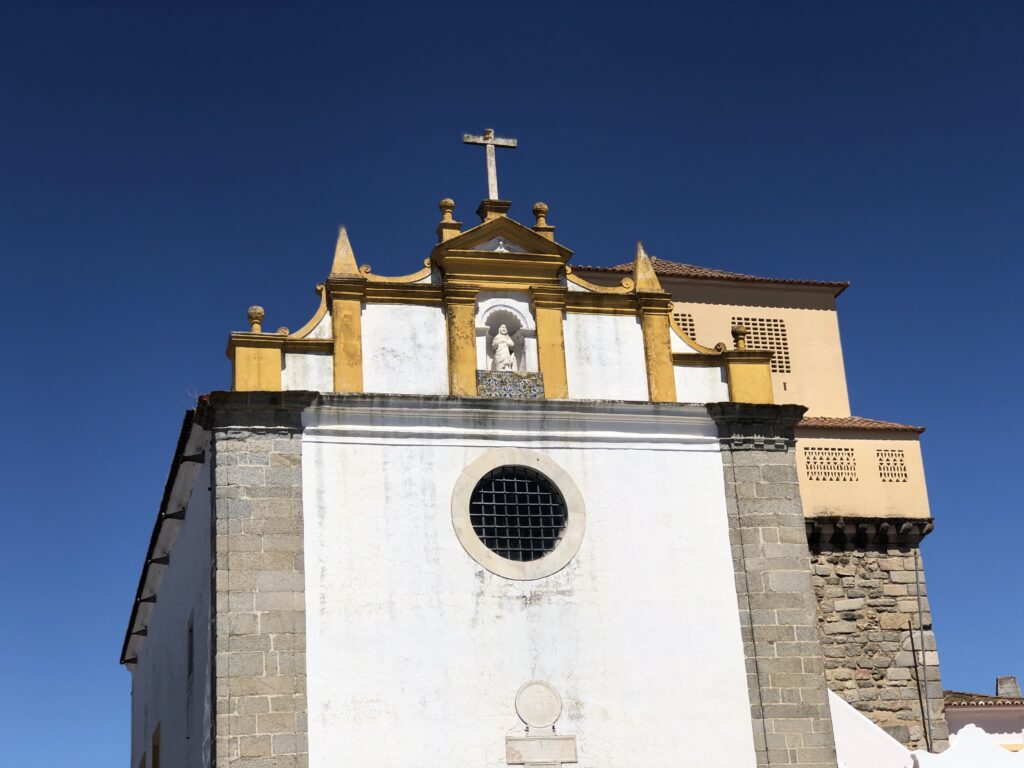
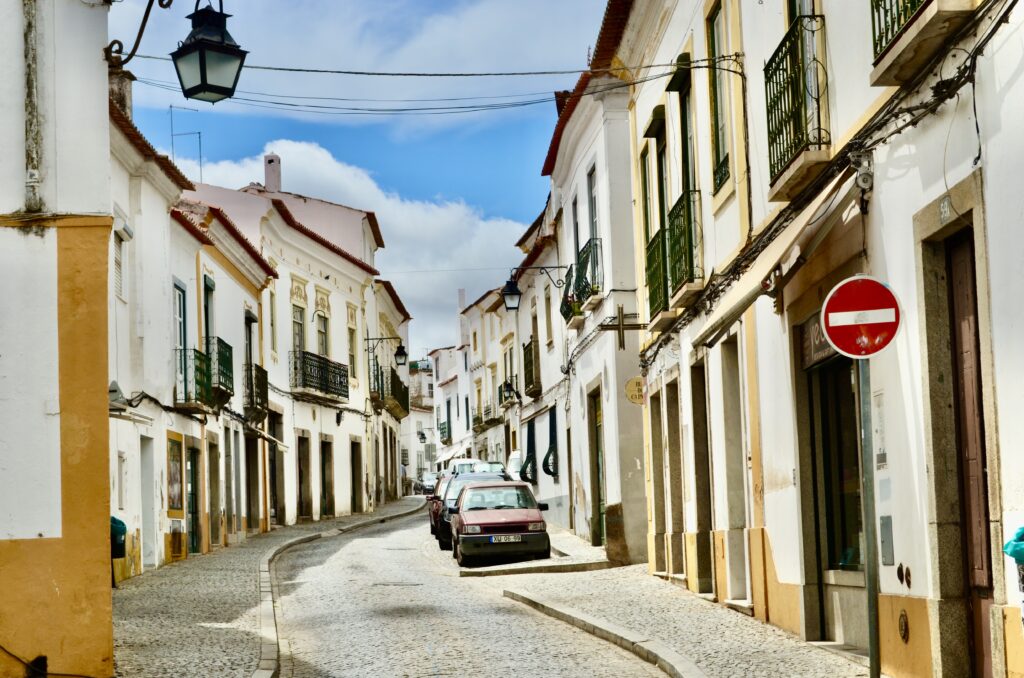
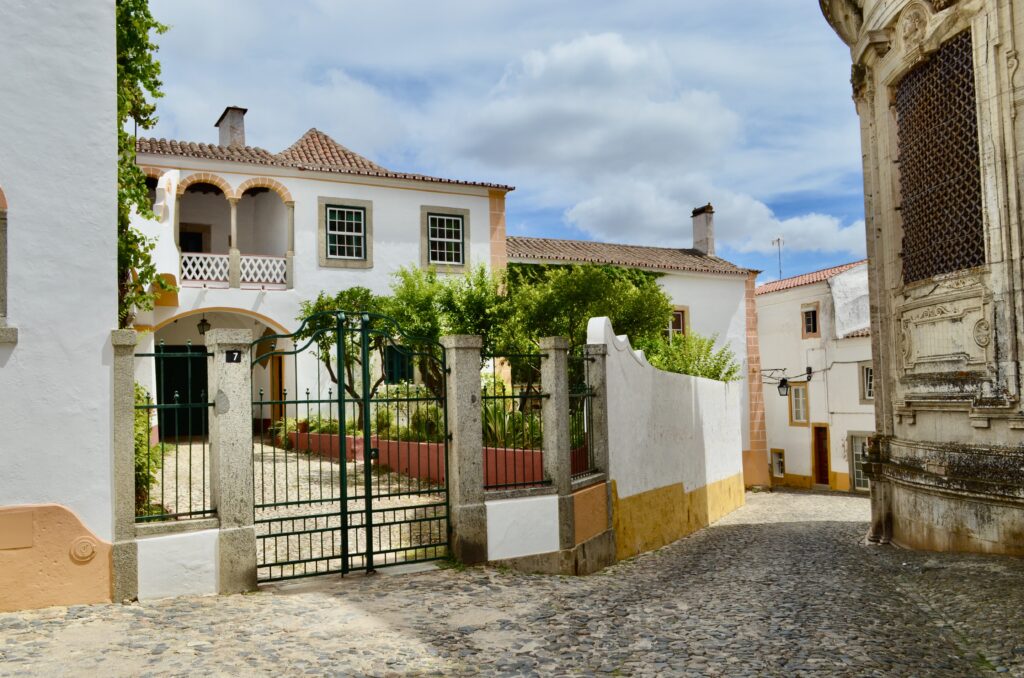
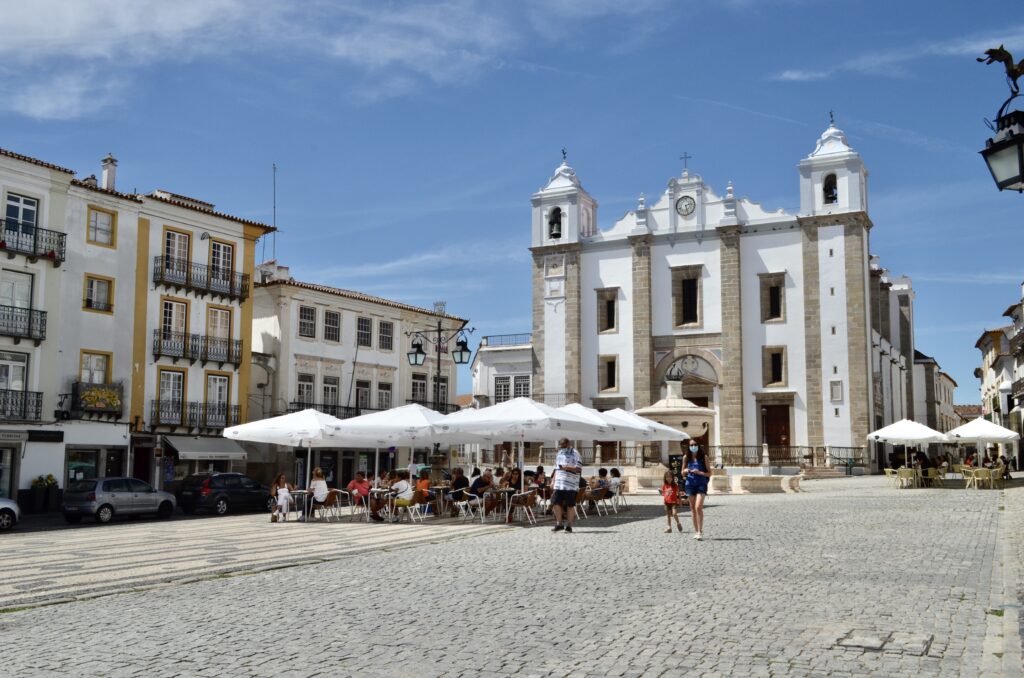
The Main Sights
Due to the small size of the city you won’t really be able to get lost. Take advantage of that and wander around without a map or Google Maps open. There are some supremely charming streets that lead into the local, residential areas. If you are able to spend at least a night here you will be able to deeply sense the everyday rhythms of the place.
Temple of Diana
At the city center you will find a prominent square where the Roman Temple of Diana, the goddess of hunting, remains. The temple’s thirteen pillars still stand and is considered some of the best preserved Roman ruins on the Iberian peninsula. Originally built in the 1st century, it was converted into a temple by a cult led by Emperor Augustus. It is incredible to see so many of its pillars still standing today and in such pristine condition! You can almost imagine a fully functioning Roman temple as it was back in the day.
Ahead of the temple is a lovely square with a garden and view over the valley surrounding Évora. Given the temple is at the highest point of the hill the views are stunning. Enjoy the rolling hills, greenery and charming tiled rooftops that spread before your eyes below. If you fancy a drink or a bite to eat the kiosk in the square is a great option. When we visited the kiosk ourselves we noticed the servers taking precautions by spacing out the seats and sanitizing the tables and chairs after every customer.
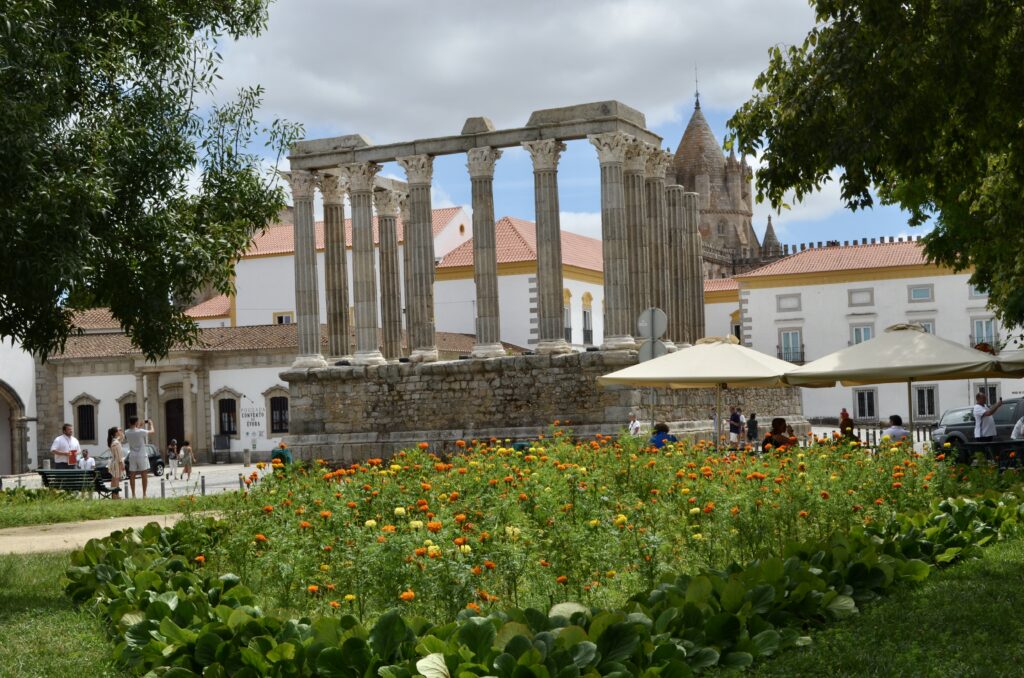
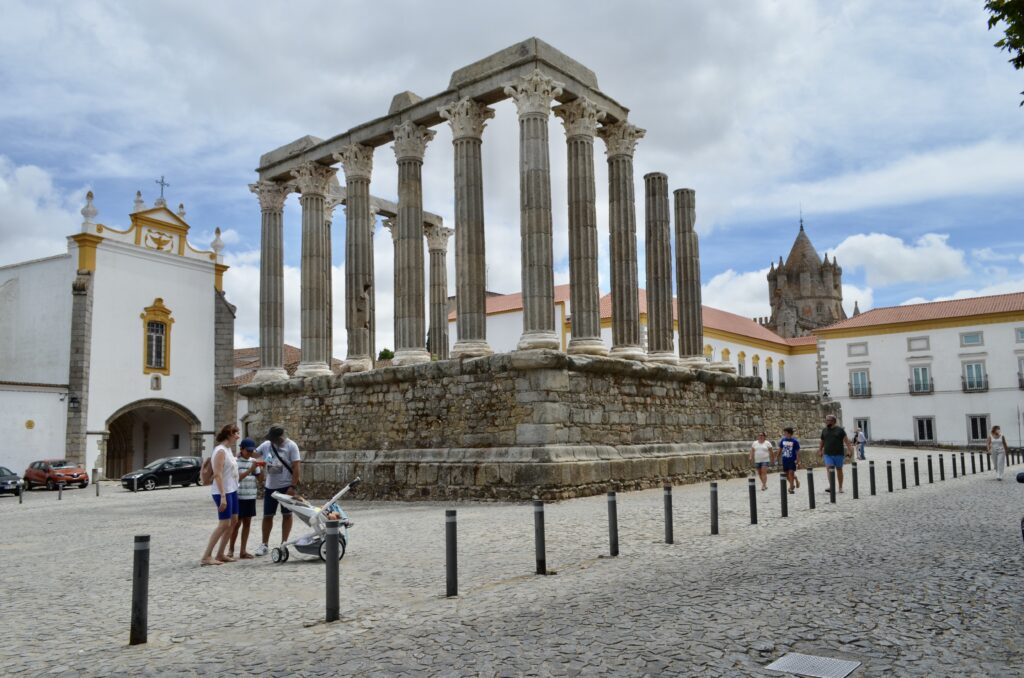
Sé Cathedral
If you walk down the street behind the Temple of Diana, you will come across another major attraction of Évora, the Sé Cathedral. From other parts of the city you will likely see the cathedral’s steeples due to its sheer size and magnificence. What is unique about the Sé is that you are able to access the rooftops, which allow for the best views of Évora and the surrounding sun-drenched valley, small towns and the cathedral itself. You don’t want to miss this! The rooftop is also visibly sloped so it makes you feel a bit giddy.
The Sé is one of the largest and most beautiful in Portugal and is classified as a UNESCO World Heritage site. The Roman-Gothic style of the building makes it striking. Built around 1280-1350, it has a domed lantern tower, which can be admired from the rooftop. The ridged, fortress-like shape of the tower is typical of the Middle Ages. The Main Chapel was rebuilt in the 18th century in the Baroque style, which is elaborate and rich with colored marble, gold, and expressive carvings. The German architect, Johann Friedrich Ludwig, also designed the Convent of Mafra. The Cloister of the Sé is also absolutely stunning with a grand chapel for the founder of the cathedral.
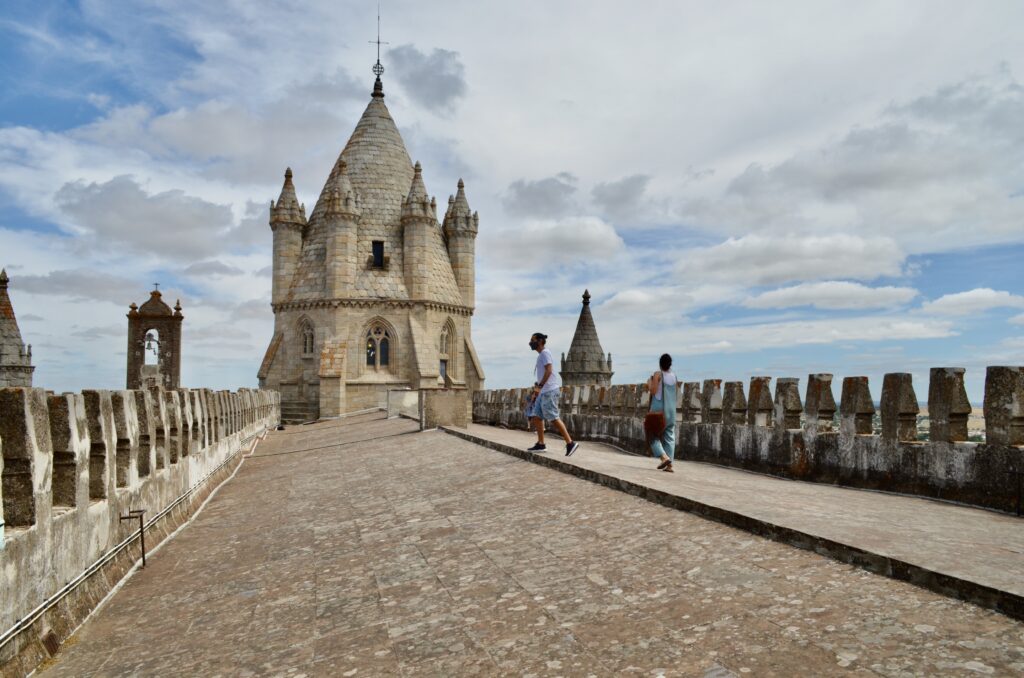
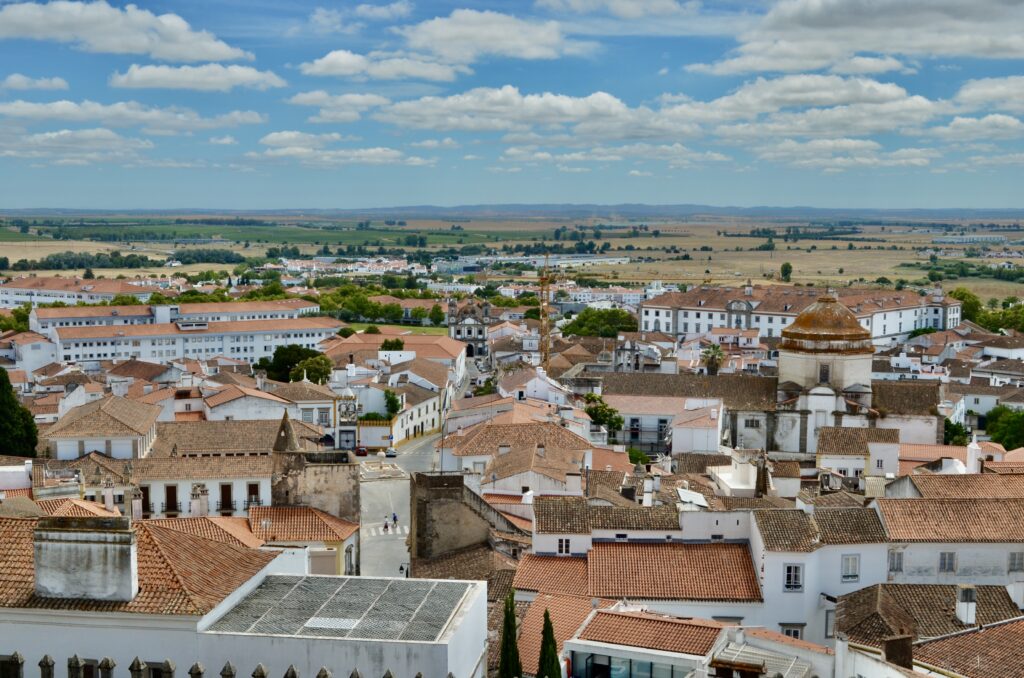
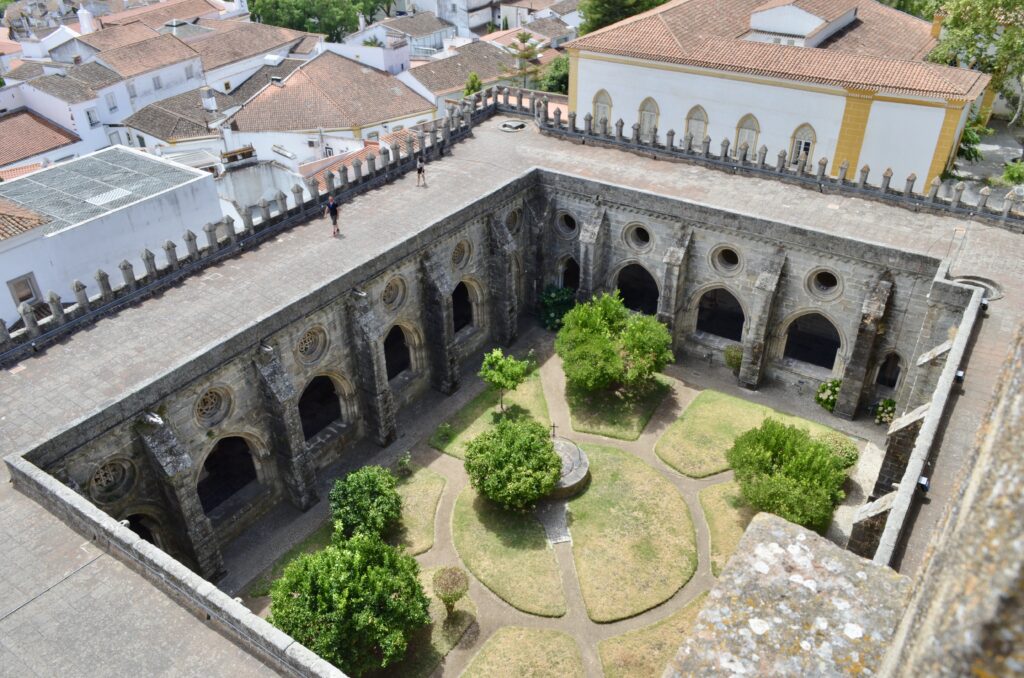
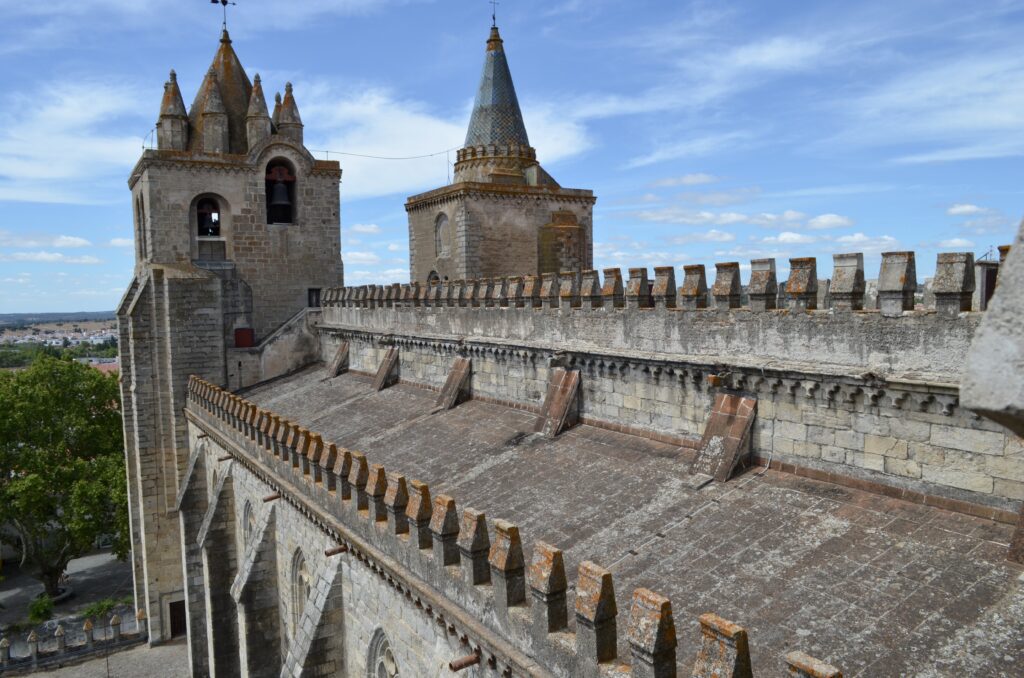
Church of St. Francis & Capela dos Ossos
Another major destination in Évora is the Capela dos Ossos, located in the beautiful Church of St. Frances, also known as Igreja e Mosteiro de São Francisco. In fact, this was the only sight where we had to wait on a long line to get into. As macabre as it is, the “Chapel of Bones” is worth seeing though it is a bit haunting. The rest of the church is also beautiful as it is so pay a visit! The Church of St. Frances was built by a Franciscan monk between the 1475 and 1550s in a Gothic style. However there are some hints of Moorish influence to be found in the structure as well. The church is known for its single nave, which ends in a splendid ribbed vaulted ceiling and is the largest of its kind in Portugal. Gil Vicente, the father of Portugal’s dramatic arts is buried here. There is also a museum inside the greater church, which is included in the ticket required to visit the Chapel of Bones. As you can imagine, much of the art is religious from various periods of time, including the middle ages.
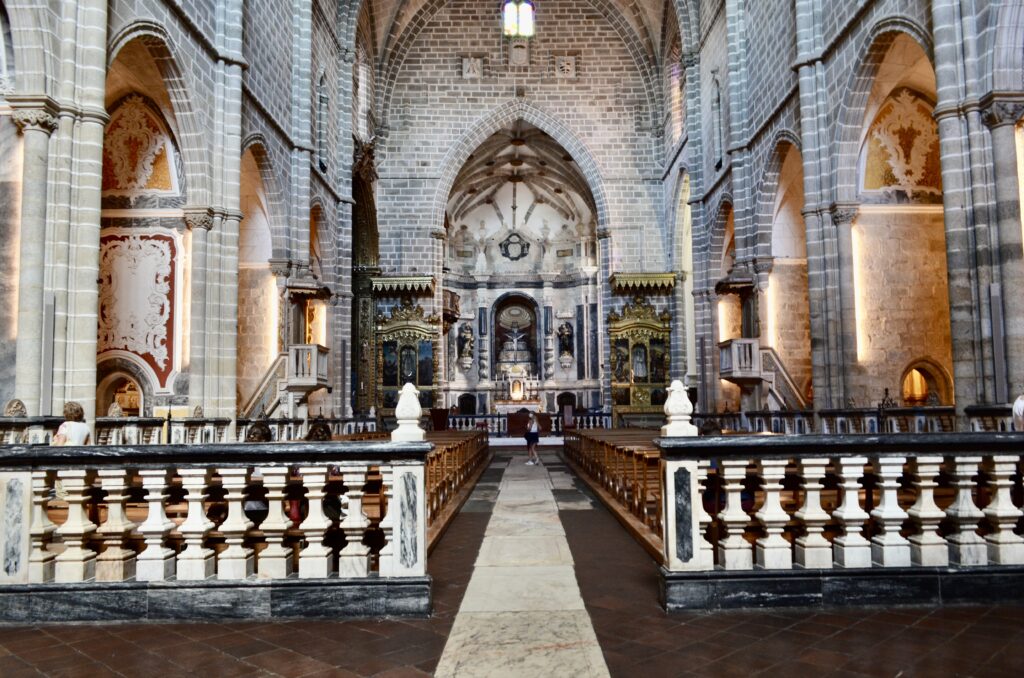
As for the “star of the show,” the Chapel of Bones was aptly named for its walls and pillars covered with human skulls and bones. Some legends say that these bones are from soldiers or victims of the plague. But in reality they come from the ordinary citizens of Évora when its dozens of cemeteries became overcrowded. Rather than having purely grotesque motives the monks who built this chapel believed it better to move the remains to the church rather than condemning the souls of the dead by discarding them. Also instead of hiding the bones behind doors, they thought it best to reveal them to encourage ordinary citizens to meditate on the transience of life and material goods. Since Évora at the time was a town of great wealth the monks hoped this would convince more of its citizens to be humble and relinquish their materialistic outlook on life. I would imagine the monks were extremely effective – what brings the message home more evocatively than this? The three founding Franciscan monks are also laid to rest here.
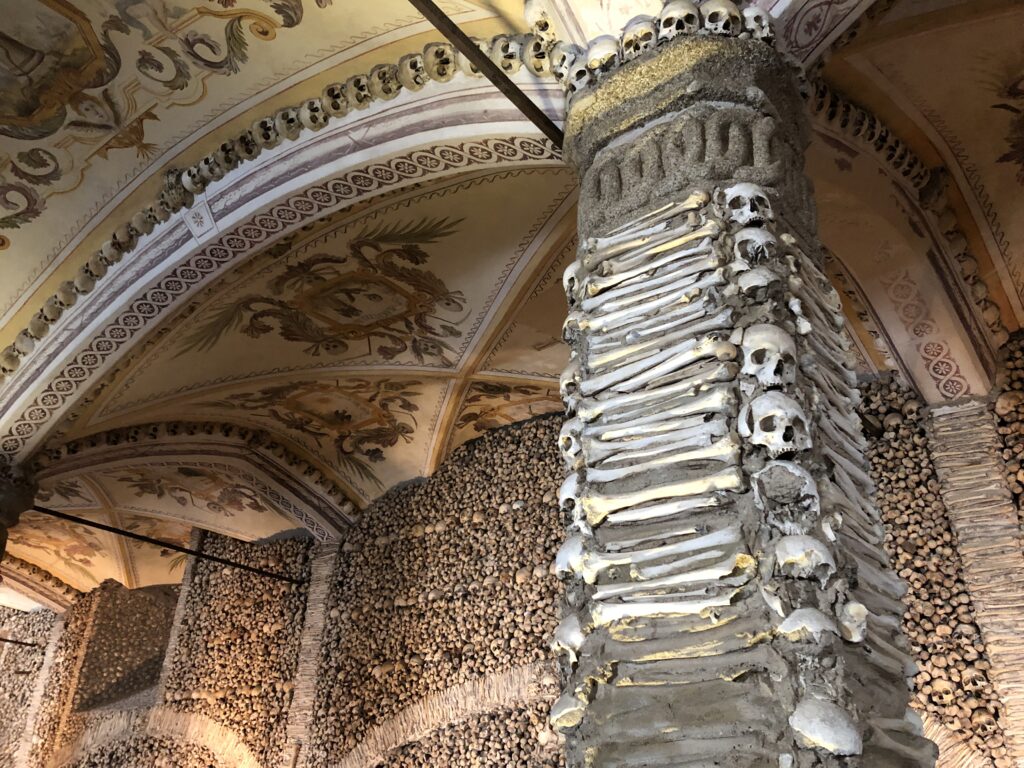
Museu da Évora
If you are a history or art buff and are interested in learning more about the illustrious past of Évora or its culture influence you should definitely visit the Museu da Évora. You will find here Roman and Moorish artifacts, an excavation site, antiquities and paintings. I was particularly struck by the extensive oil painting collection. Apparently back in the day the most preeminent painters of the region were influenced significantly by Flemish and Italian painters and artists. The museum is a good size so take note if you are an art or history lover – put aside a few hours in a day for this. Also although not all of the descriptions are in English you can understand the general picture. The museum is located right besides the Sé, which is convenient!
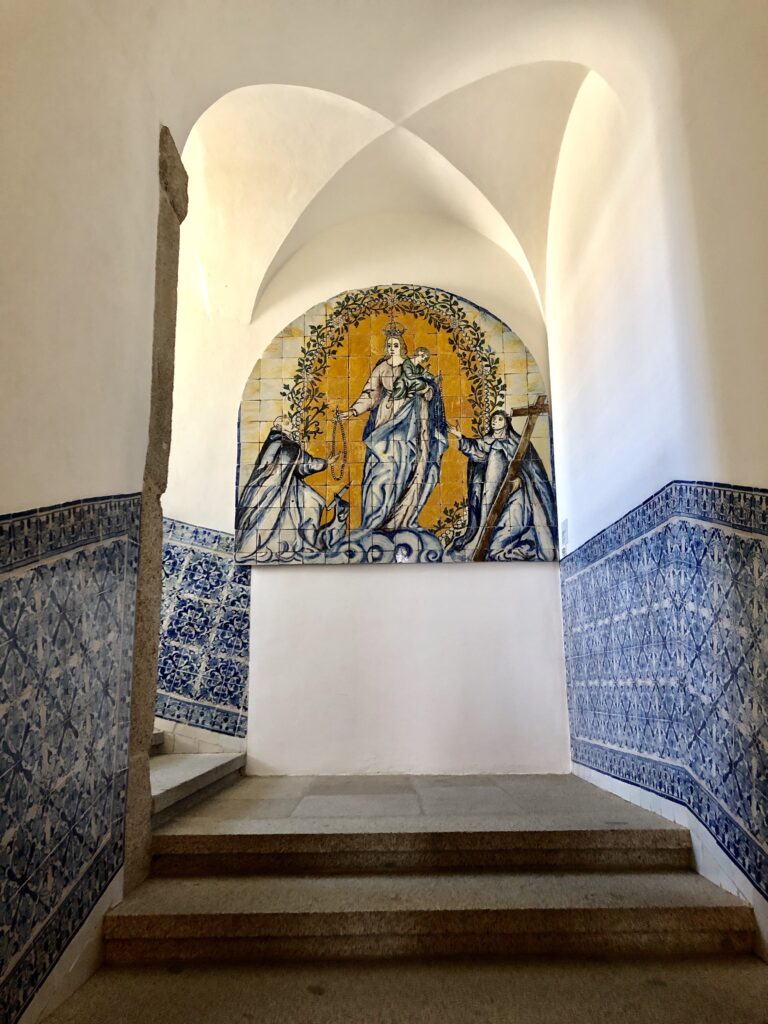
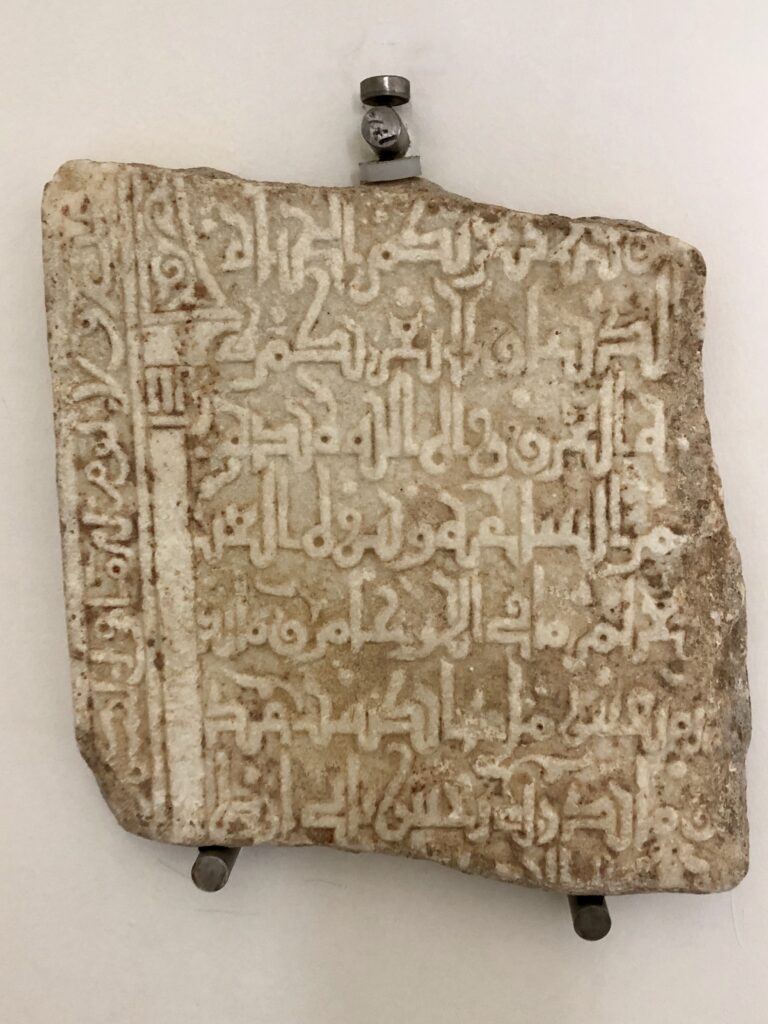
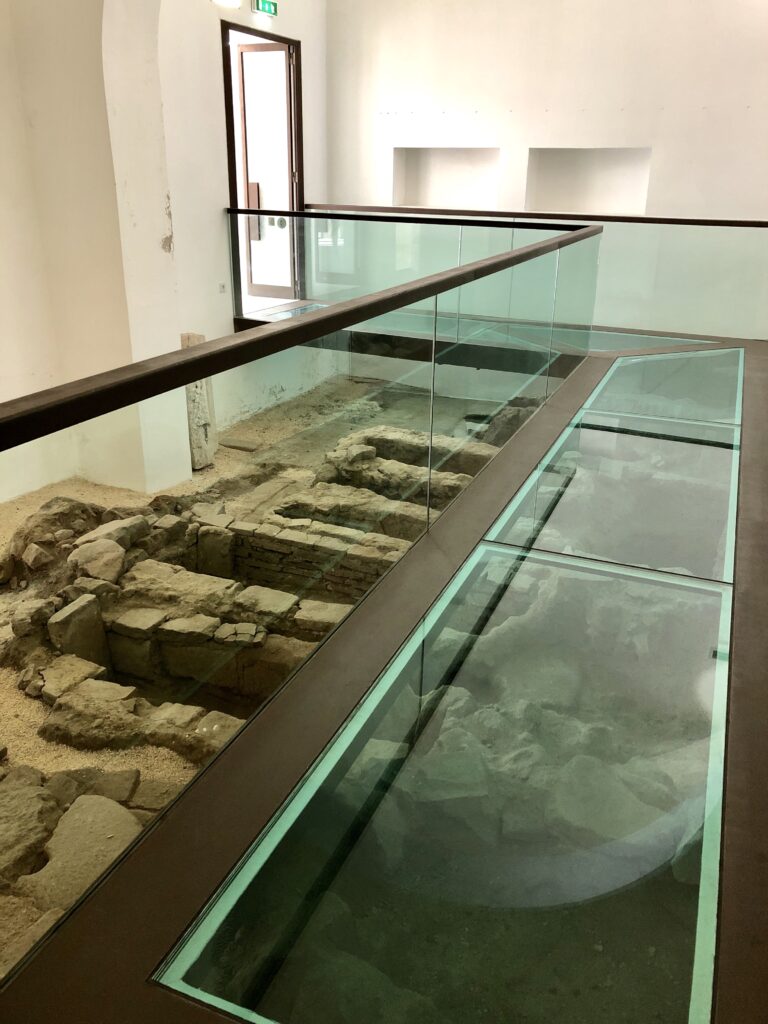
Cromeleque dos Almendres
After the Capela dos Ossos, the next most mysterious sight in Évora is the Cromeleque dos Almendres. Akin to the Stonehenge, these stones date back to prehistoric times. These egg-shaped boulders form a rough circumference around the top of a hilly area. Discovered in the 1960s, studies have confirmed that the monument was created sometime between the 6th and 4th millennia BC. Although no one really knows what purpose the Cromeleque dos Almendres had it is generally agreed that it was likely used for ceremonial purposes. Also, given it overlooks the eastern horizon and follows the movement of the Sun and Moon the Cromeleque dos Almendres was likely a sacred place where pre-historic peoples celebrated the cycle of nature. On some of the stones you can still see various designs, though many have been rubbed off over the centuries by the wind and rain.
There is a deliberateness that you sense when you wander through these stones and it makes you wonder what sorts of rituals were held here and for whom. Traditions and ceremonies continue to play large roles in our societies. It is touching to see how this was been the case for a very long time and is part of a much larger narrative.
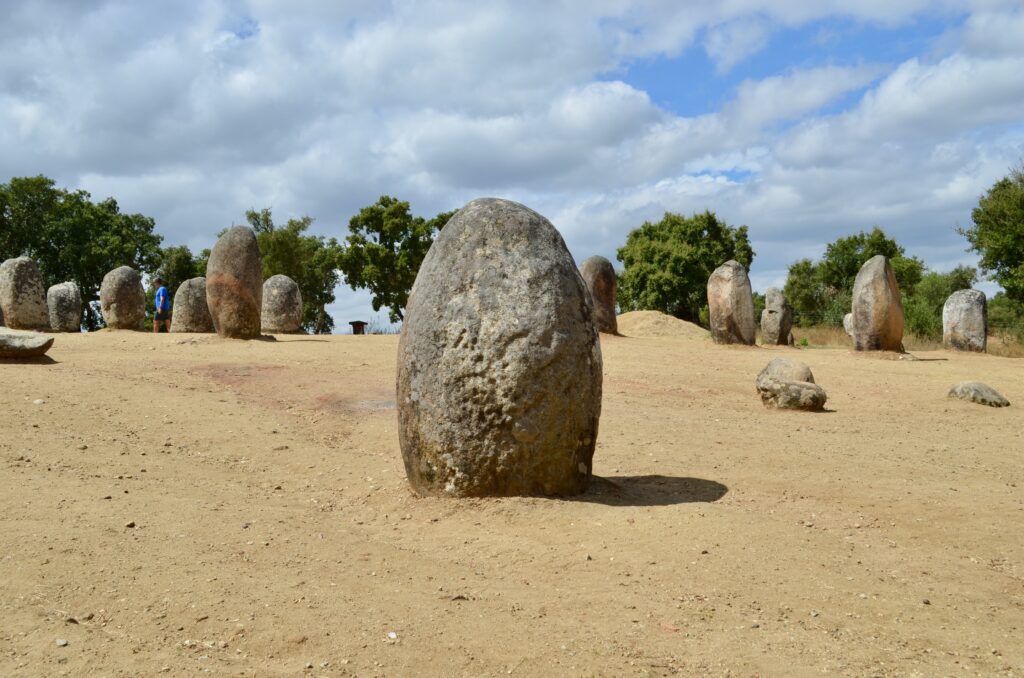
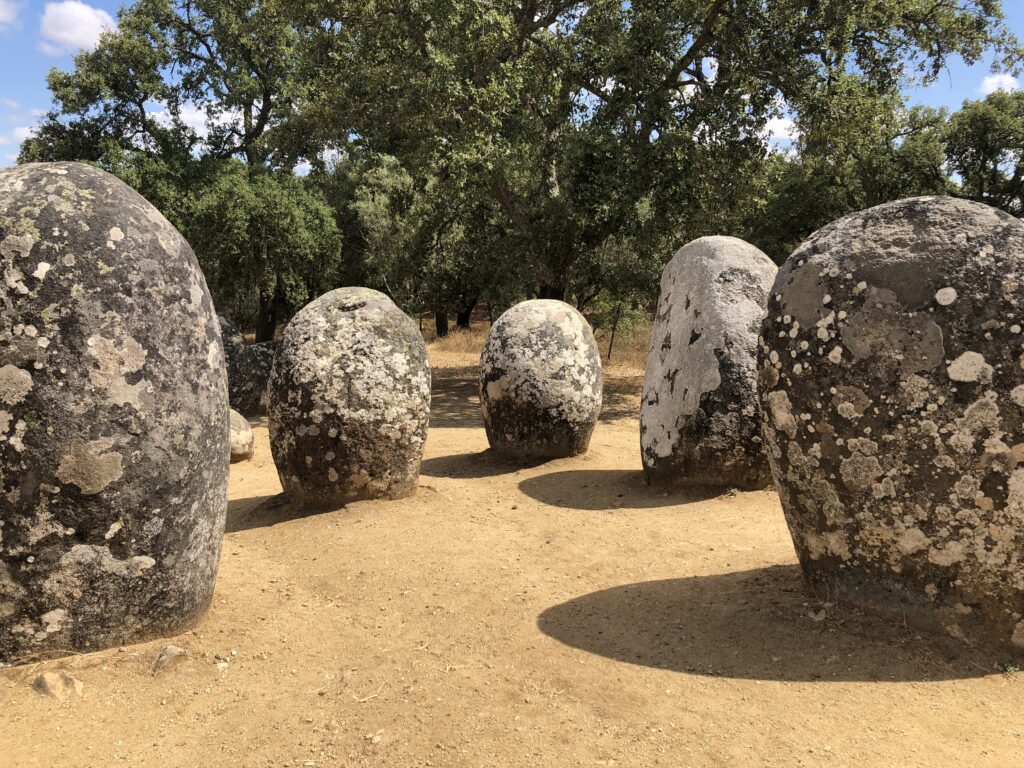
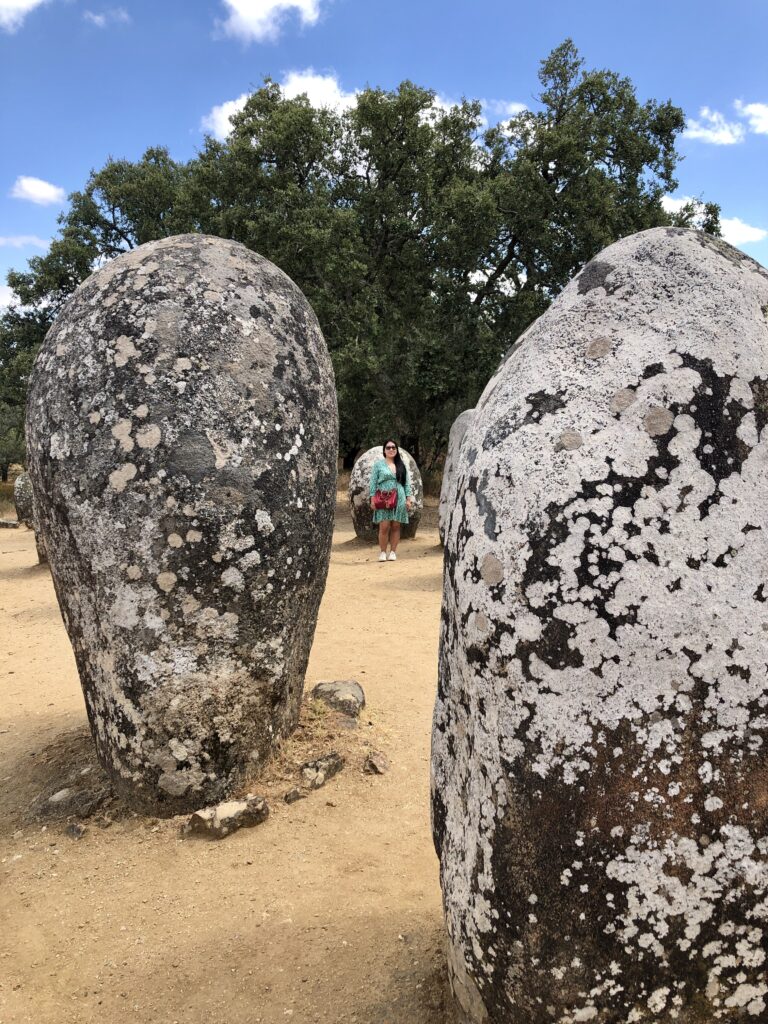
In Closing
Évora is absolutely one of the most charming cities I have had the pleasure of visiting in Portugal. It is small but filled with character and side streets that will lead you to interesting nooks and crannies of this old city. There is also a great deal to do of cultural and historical value that will leave you fascinated and in awe of its illustrious past and Portugal in general. The countryside surrounding Évora is also scenic with rolling hills, olive trees, vineyards and whitewashed farmhouses. The peacefulness here is palpable and will leave you wondering why you are always in some sort of hurry back at home. Your senses will be delighted by the strong, evocative sunlight, the earthy taste of red wine, the delicious regional cuisine and historic views. Just make sure you wear your most comfortable shoes as the cobblestones feel like they have been there since Roman times!
For the perfect place to stay in Évora check out my post on a former convent turned in a luxury hotel and spa, Convento do Espineiro! As for more trip ideas in Portugal, check out Porto, the Algarve, Sintra and Cascais.
